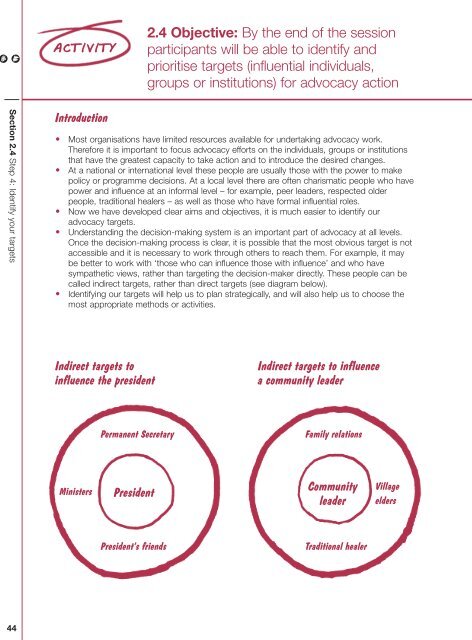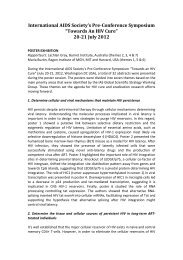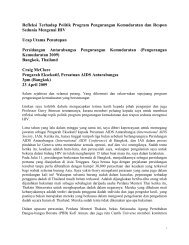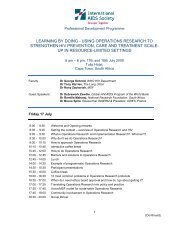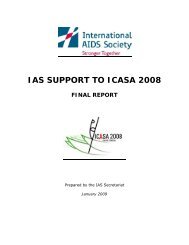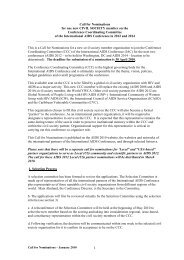Advocacy in Action - International AIDS Society
Advocacy in Action - International AIDS Society
Advocacy in Action - International AIDS Society
Create successful ePaper yourself
Turn your PDF publications into a flip-book with our unique Google optimized e-Paper software.
ACTIVITY<br />
2.4 Objective: By the end of the session<br />
participants will be able to identify and<br />
prioritise targets (<strong>in</strong>fluential <strong>in</strong>dividuals,<br />
groups or <strong>in</strong>stitutions) for advocacy action<br />
Section 2.4 Step 4: Identify your targets<br />
Introduction<br />
• Most organisations have limited resources available for undertak<strong>in</strong>g advocacy work.<br />
Therefore it is important to focus advocacy efforts on the <strong>in</strong>dividuals, groups or <strong>in</strong>stitutions<br />
that have the greatest capacity to take action and to <strong>in</strong>troduce the desired changes.<br />
• At a national or <strong>in</strong>ternational level these people are usually those with the power to make<br />
policy or programme decisions. At a local level there are often charismatic people who have<br />
power and <strong>in</strong>fluence at an <strong>in</strong>formal level – for example, peer leaders, respected older<br />
people, traditional healers – as well as those who have formal <strong>in</strong>fluential roles.<br />
• Now we have developed clear aims and objectives, it is much easier to identify our<br />
advocacy targets.<br />
• Understand<strong>in</strong>g the decision-mak<strong>in</strong>g system is an important part of advocacy at all levels.<br />
Once the decision-mak<strong>in</strong>g process is clear, it is possible that the most obvious target is not<br />
accessible and it is necessary to work through others to reach them. For example, it may<br />
be better to work with ‘those who can <strong>in</strong>fluence those with <strong>in</strong>fluence’ and who have<br />
sympathetic views, rather than target<strong>in</strong>g the decision-maker directly. These people can be<br />
called <strong>in</strong>direct targets, rather than direct targets (see diagram below).<br />
• Identify<strong>in</strong>g our targets will help us to plan strategically, and will also help us to choose the<br />
most appropriate methods or activities.<br />
Indirect targets to<br />
<strong>in</strong>fluence the president<br />
Indirect targets to <strong>in</strong>fluence<br />
a community leader<br />
Permanent Secretary<br />
Family relations<br />
M<strong>in</strong>isters<br />
President<br />
Community<br />
leader<br />
Village<br />
elders<br />
President’s friends<br />
Traditional healer<br />
44


